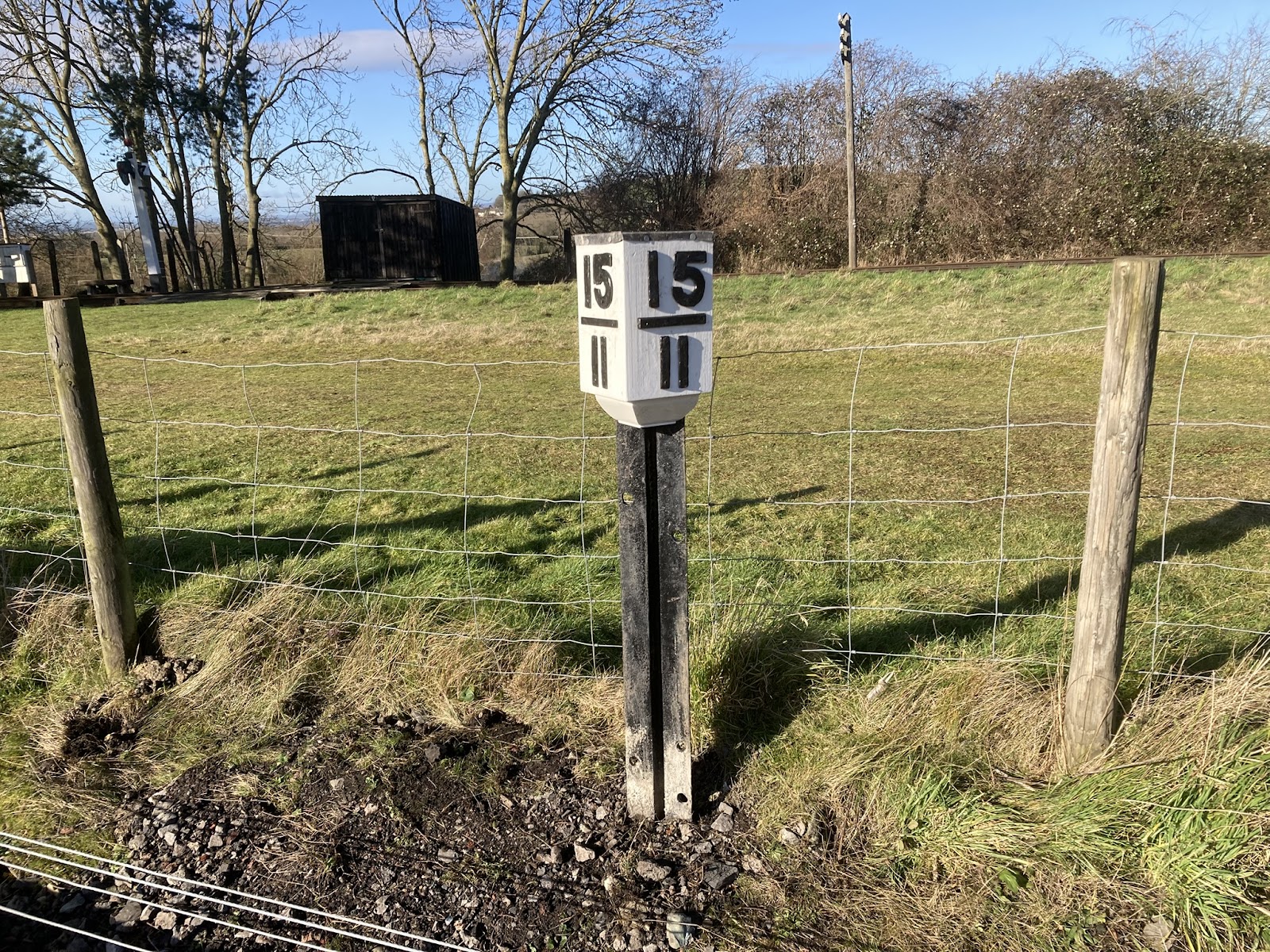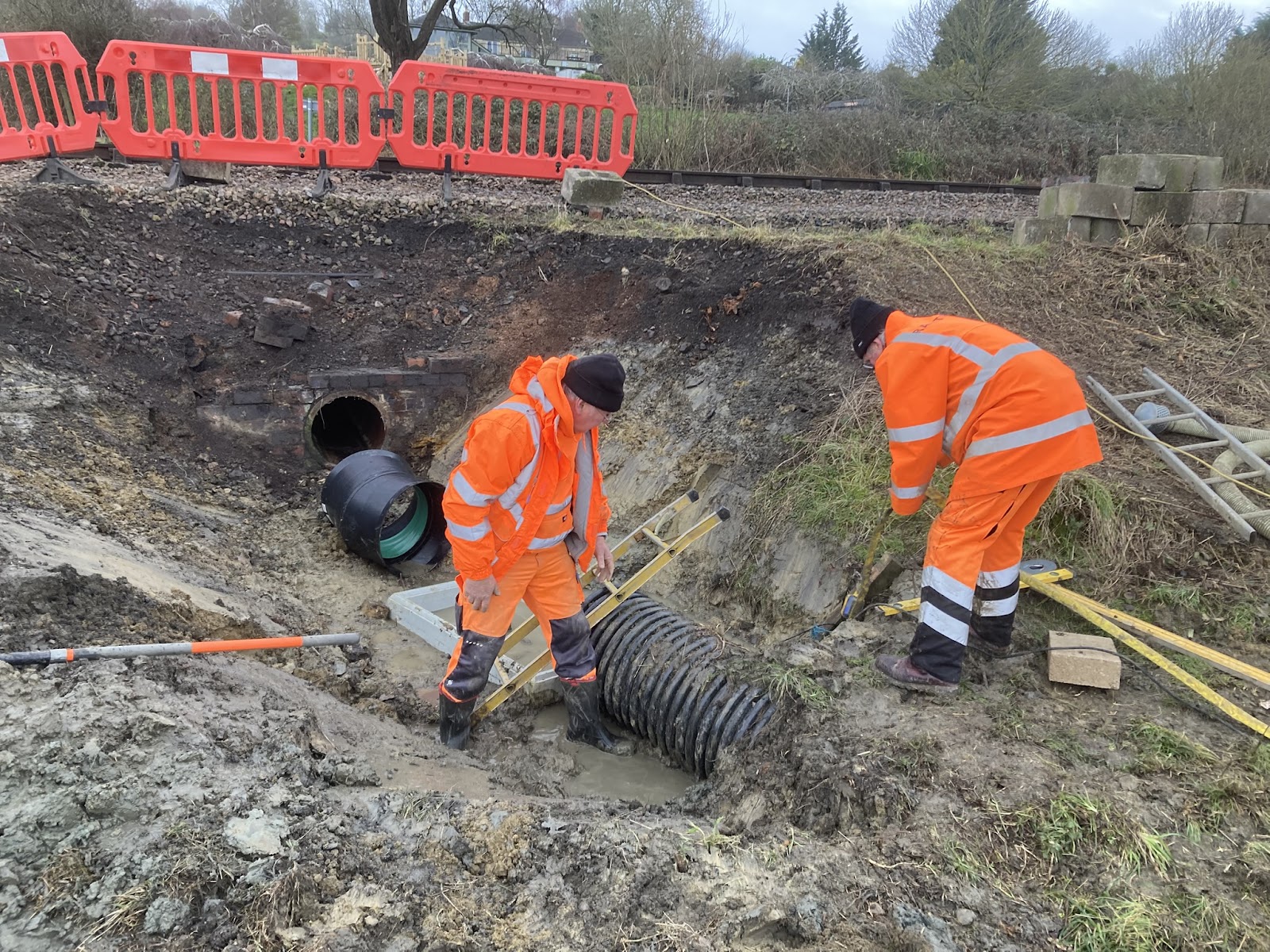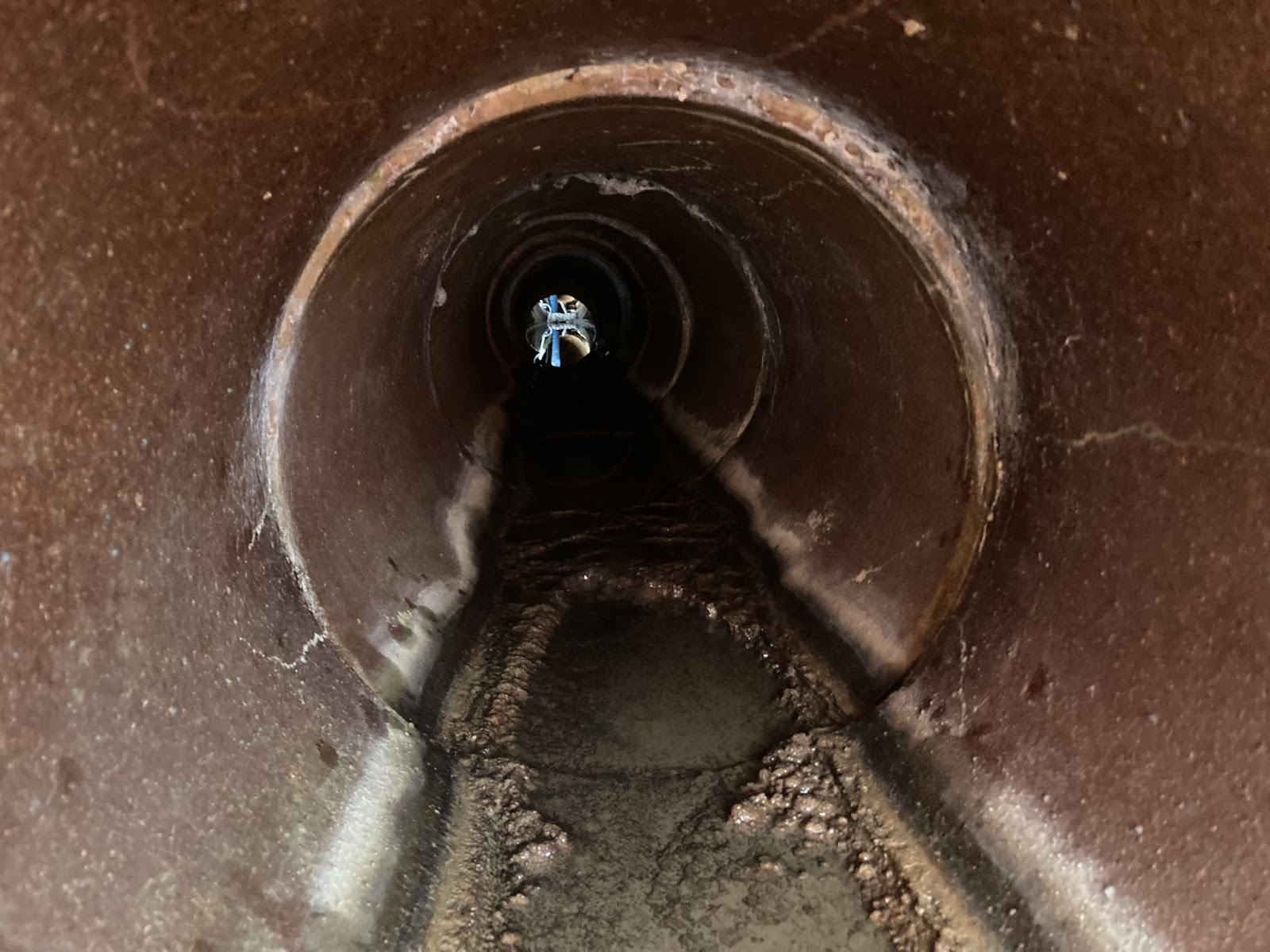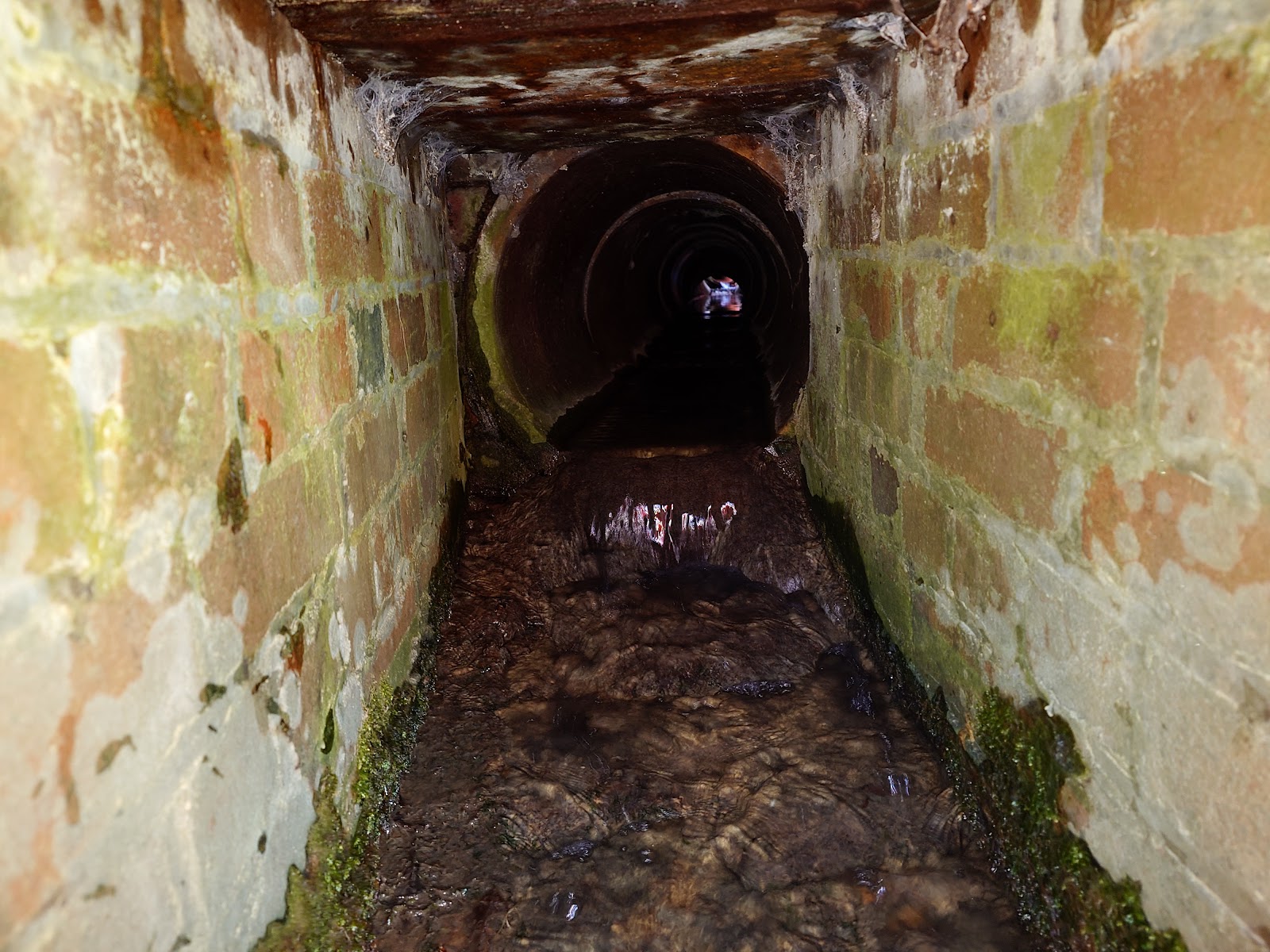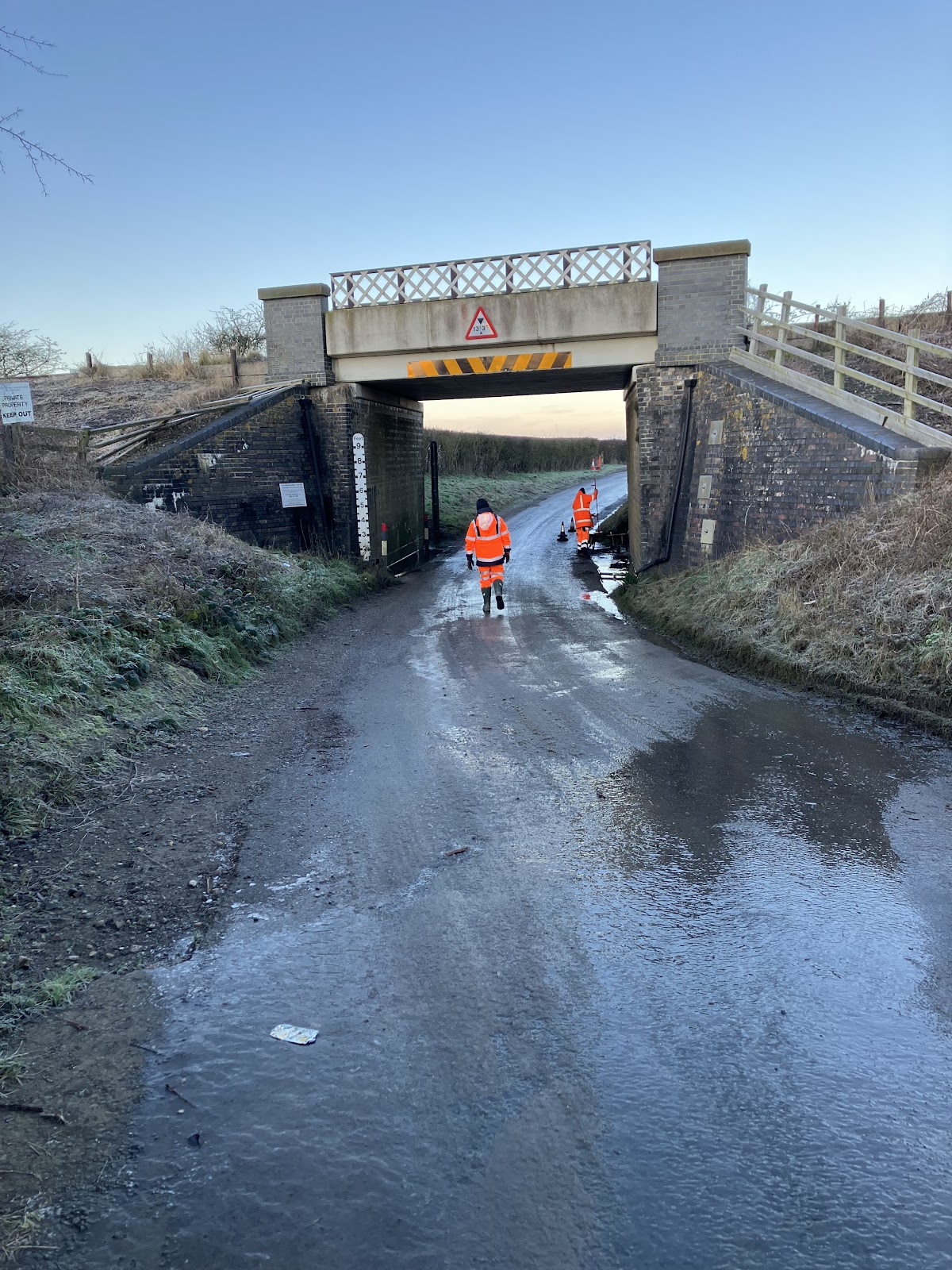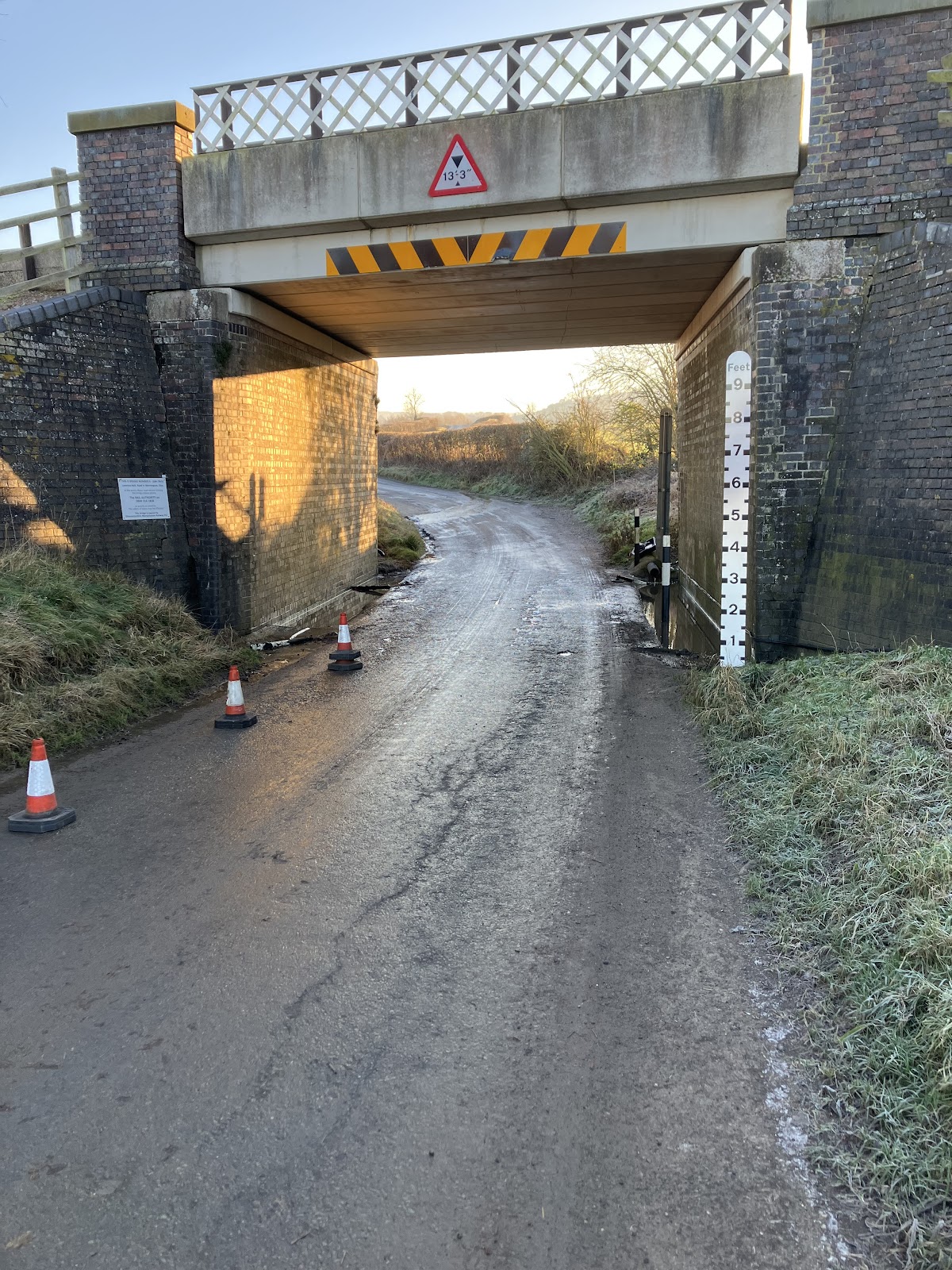... and at least four men are looking into it.
 |
Jonathan, Nigel, Polly and John contemplate the hole at 24A. Old headwall just visible at the bottom.
|
But no need to worry, it was intended.
This was the main phase of demolition and excavation for the rebuilt
of the under track outlet of culvert 24A on the up (Malvern) side opposite the Royal Oak at
Gretton.
Thursday 16th January
Almost a full team arrived at a lovely
sunny, but cold, Winchcombe. However, mist and fog was not far away,
all of the team reported instances of low or very low visibility on
their various journeys in.
Initially our split was 5-3-2. The
group of five, Dave, Ian, Peter, Stuart and Martin finally resumed
our milepost replacement programme. With the line closed for PWay
work at Didbrook, both of the main sets of carriages are at
Winchcombe, so the platform roads at Toddington are empty. We took
advantage of this rare occurrence, to use use a Permaquip trolley to
convey tools and materials from the steam loco yard up to Toddington
North cutting. This is one of the locations which is very difficult
to access except on foot. Carrying a 6 foot length of bridge rail and
a bag of Postcrete cement by hand is an impossible task. Hence the
use of the trolley. The objective was to insert the bridge rail as
the upright for long missing 9¼ milepost near to the Toddington down
bracket signal. A crowbar was found to be the best tool to make a two
foot hole in the ground in which to plant the post. A bag of
Postcrete and a splash of water to fix the post and it was job done.
The already manufactured head will be installed in a couple of weeks
time.
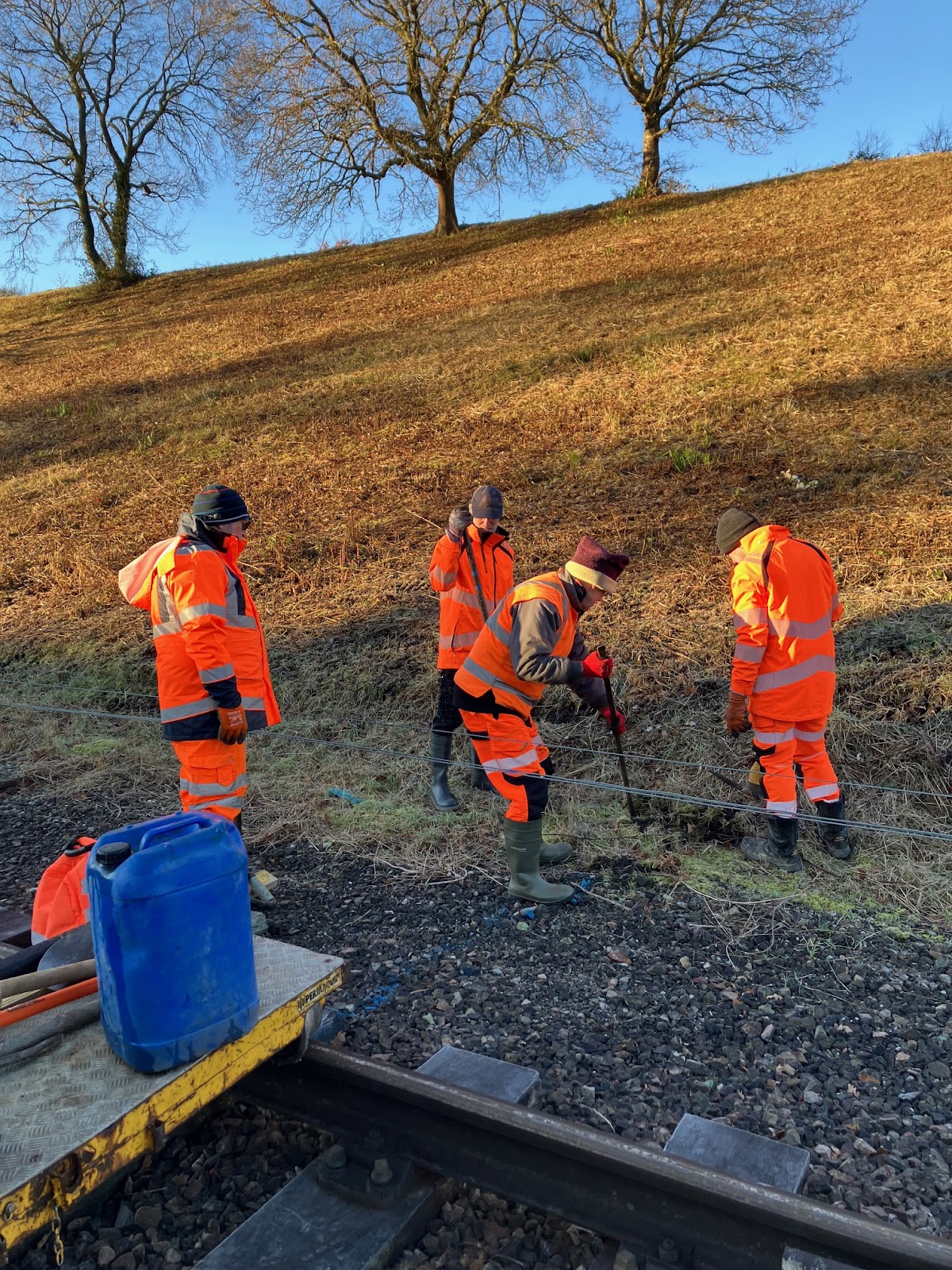 |
Ian uses the crowbar to start the hole for 9¼. [Photo by Dave]
|
 |
Peter celebrates after checking the position of the post - vertical in the plane parallel to the track, a slight lean away in the plane at right angles. [Photo by Dave]
|
Then the milepost team repeated the
exercise at Gotherington. Again, this is a not an easy site to reach
with heavy materials because of the double track of the loop. Here
the task was to replace milepost 15½. Although this was in
reasonable condition (thanks to Bryan at Gotherington Station) it was
mounted on a wooden post and the hollow wooden head needed some
attention. The group followed the same process to inset a length of
bridge rail. A new solid wood head is also ready for fitting here in
a few weeks time; the replaced head and cast figures will be
refurbished and reused. Quite possibly for milepost 15¼; which the
group passed on their trolley trips to and from Gotherington Yard.
This is currently a BR style yellow metal head on a wooden post; but
at least it is now vertical. Having planted two mileposts before
lunchtime, the group contacted the team leader, expecting to be
directed to help out at 24A, Gretton. However, both the other groups
had also completed their planned tasks for the day; so it was a
return to Winchcombe. So for the third Thursday in a row, lunch was
in the Churchward House Mess; much more room and more importantly,
much warmer.
 |
A reasonable head but on a wooden post - not 100% authentic! Martin about to undertaken the removal at Gotherington. [Photo by Dave]
|
 |
The replacement bridge rail post is far more appropriate for a heritage site. [Photo by Dave]
|
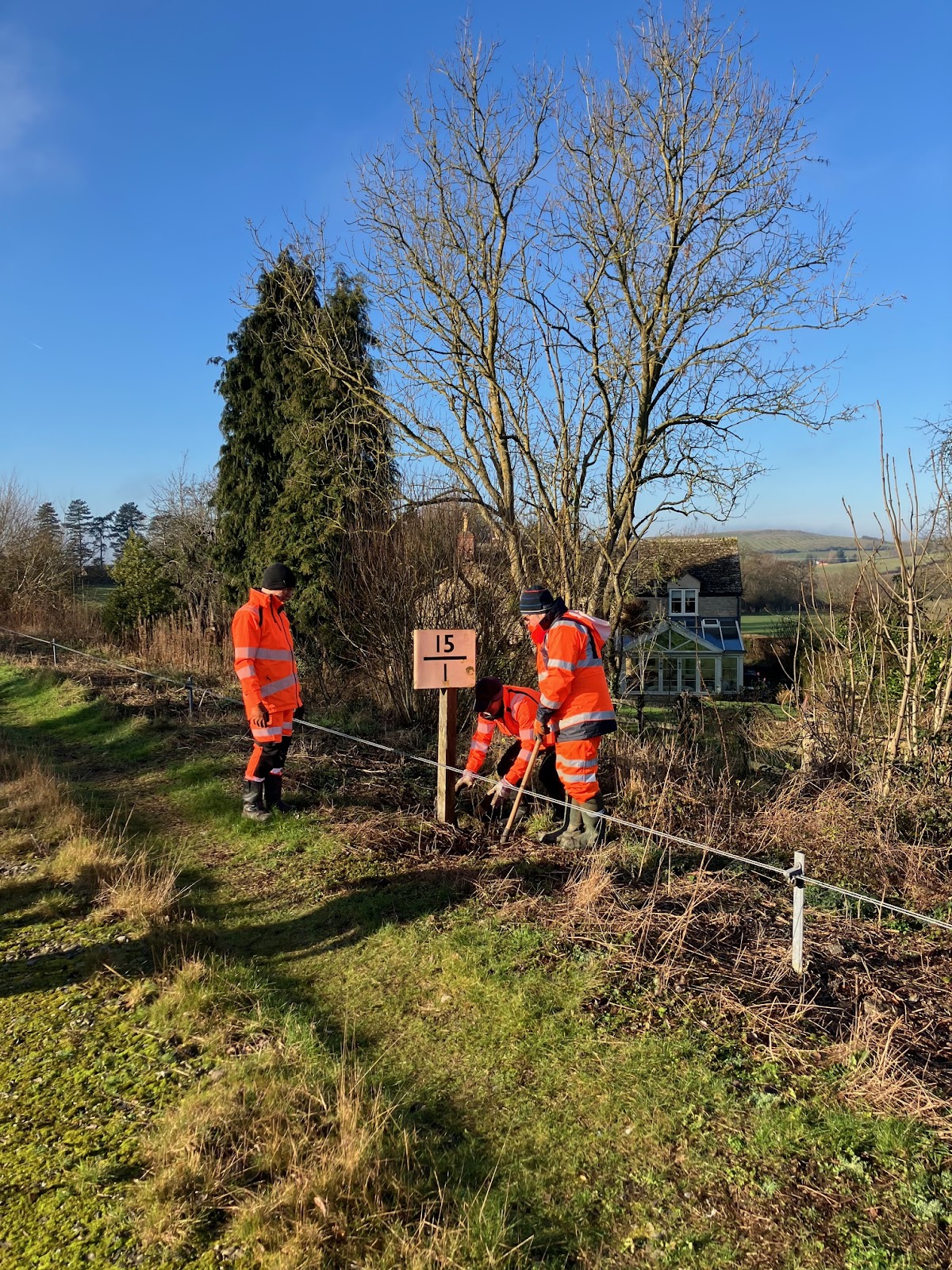 |
15¼ gets some attention. [Photo by Dave]
|
The group of three was Nigel, Polly
and John whose initial task was replacing six coping bricks on a down
side cess headwall that is part of culvert 20B at Chicken Curve. A
straightforward job and quickly executed by our top class bricklayer.
Two short marker poles were added behind the headwall to make the
location more obvious to operators of robot flails and other
clearance devices. Then it was back to Winchcombe Yard to collect a
supply of concrete blocks and off to 24A at Gretton.
 |
Cess outlet headwall of 20B at Chicken Curve back to full health - and with marker poles to make it more visible. [Photo by John]
|
Meanwhile, the remaining two (Jonathan
and Andrew) had gone straight to Working Lane, Gretton and up the
haul road to 24A opposite the Royal Oak pub. However, the excavator
driver from our contractor beat us to it – he had the machine
warming up. So, after removing the red plastic safety barriers from
the trackside, and some remains of an aggregate enclosure from the
2019 work here; digging commenced. The large excavator with a skilful
operator (Mark) made quick work of digging down to end of the bore.
We carefully monitored this, as we knew there was a buried S&T
cable which had to remain intact. The old (probably BR era) extension
with brick walls and now badly corroded steel plate lids came out
easily in a couple of bucket loads. To our surprise, this revealed a
complete brick headwall with lovely coping stones. As the copings were in
very good condition; we carefully removed them; they will be very
useful elsewhere. However, the mortar of the top few courses of the
headwall was shot; so these were removed.
 |
Still some mist around as Tom Clarke's big excavator gets to work.
|
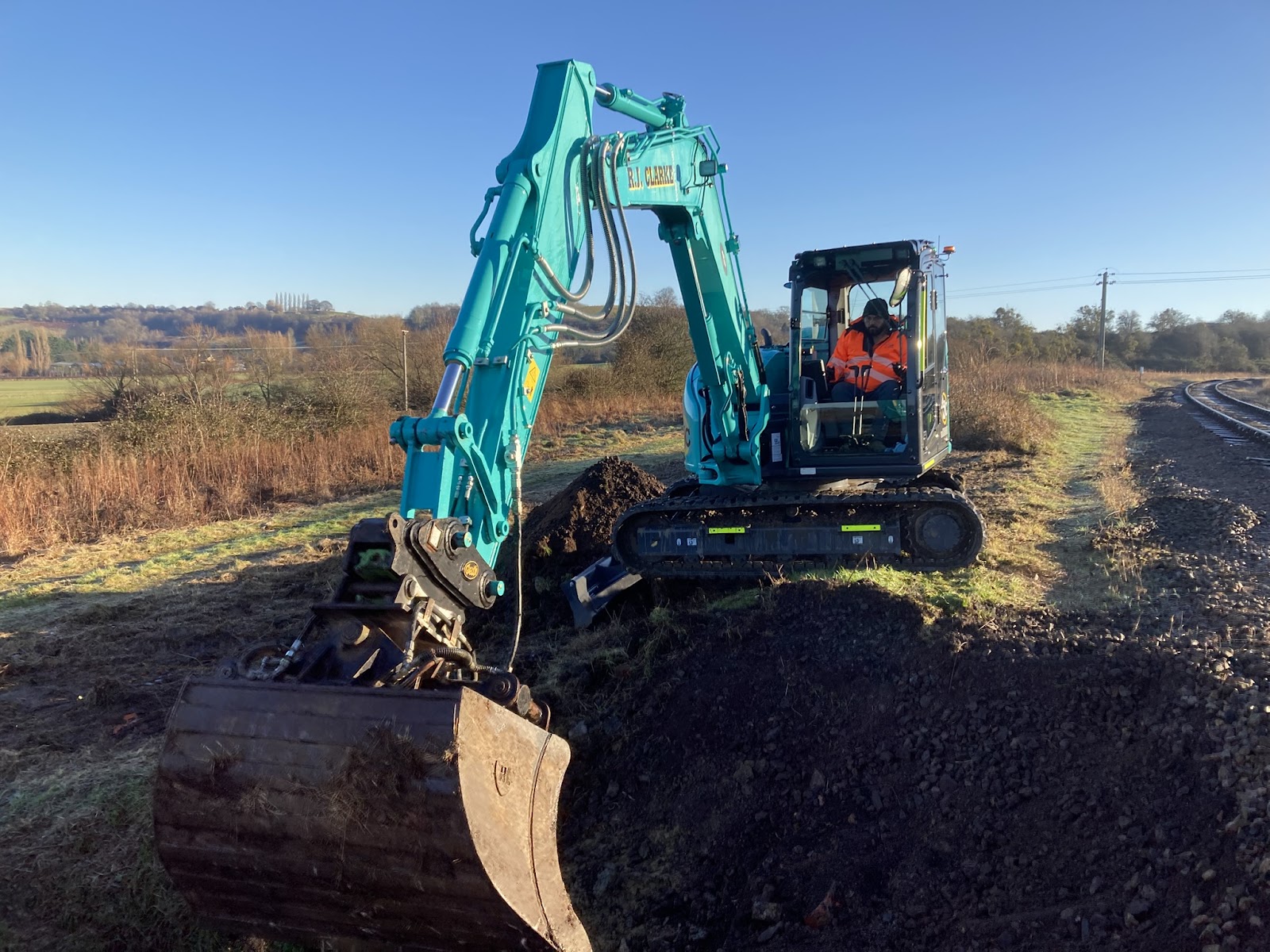 |
The mist recedes and the excavation gets deeper.
|
 |
The exposed old headwall, after removal of the coping stones. Before the extension was added, the edge of the embankment must have been very close to the old up line.
|
By the time that bricking group
arrived with the concrete blocks; most of the excavation was
complete. Just a little bit more digging to ensure the sides of the
hole were stable; and to give sufficient room around the site of our
new chamber; and then it was job done. Some of the old bricks from
the headwall; and various bits of concrete slab found in the
undergrowth were taken to the exit ditch of 24A on the far side of
the haul road as anti-scouring material.
Whilst
excavation was in progress, we had a visit from the editorial team of
UK
Plant Operators
magazine. With the Railway’s press office permission; they were
collecting material for an article on our work, particularly on how
we use a combination of our own plant and that of contractors. They
also took some drone shots and filmed an interview with the team
leader. So look out for that on their YouTube channel
(@ukplantoperatorstv).
 |
UK Plant Operators magazine staff filming progress.
|
 |
Final scoops to stabilise the sides and make sufficient room for the chamber.
|
 |
Safety barriers back in place. The undamaged S&T cable is visible. No access for vehicles along vacant trackbed of the old up line for the next few weeks.
|
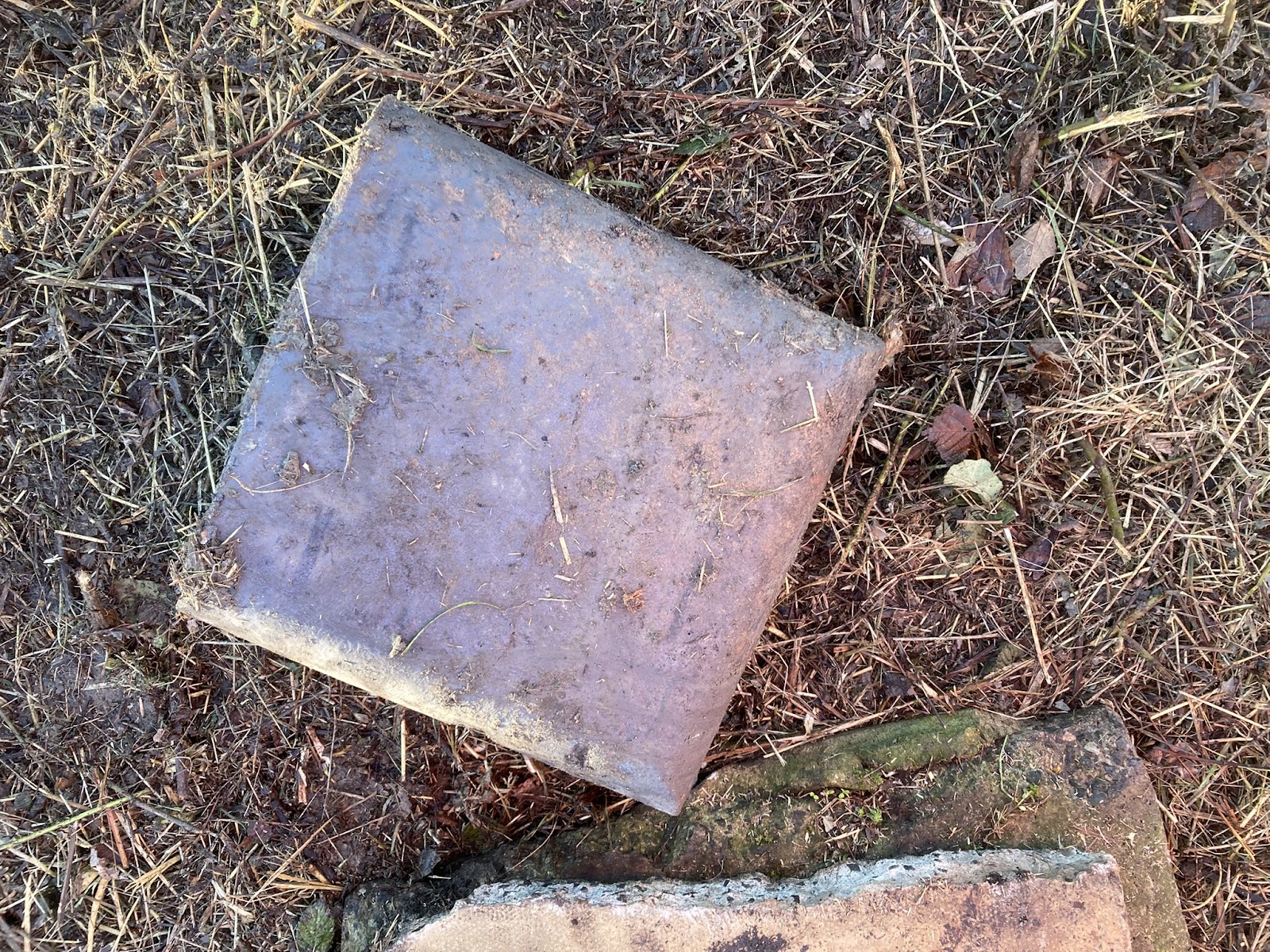 |
One of the recovered end coping stones from the old headwall - it has chamfers on two edges.
|
After
lunch, we undertook some unplanned tasks. Our supplier of pipes had
delivered the length of 450mm twinwall pipe and a 22½°
elbow collar for the 24A work. So they
were safely stored by the wooden shed. Some of the team made a quick
visit to Stanton; to see how Walsh’s are getting on with the
rebuild of wings walls of bridge 10. They also took the opportunity
to fit end caps to the safety rails we installed on the down side
headwall of cross drain 11B last year. Back in the yard, other
members attended to wheelbarrow maintenance; stripping a broken brush
cutter to enable a welding repair, and extracting the replacement
heads for mileposts 9¼ and 15½ ready for installation. With the
increase in the team’s numbers (eleven of us now), we will be able
to make better progress on the milepost replacement programme. Ian
and Stuart
have volunteered
to organise this, plus
the
programme of fitting safety markers and handrails to headwalls that
are less visible.
However,
the focus of the team for the next few weeks it to get the extension
to 24A and it’s new chamber built; and that
large
hole
in-filled. Cheltenham Gold Cup Race trains can not be delayed!
Wildlife report: A field mouse
was noted hurrying away at Gretton as we started work. Great tits,
long tail tits, kestrels, red kites and buzzards were amongst the bird
life observed there. In Winchcombe Yard we noted several pied
wagtails. No sign yet of any spring flowers, but we are only half way
through metrological winter just now!






